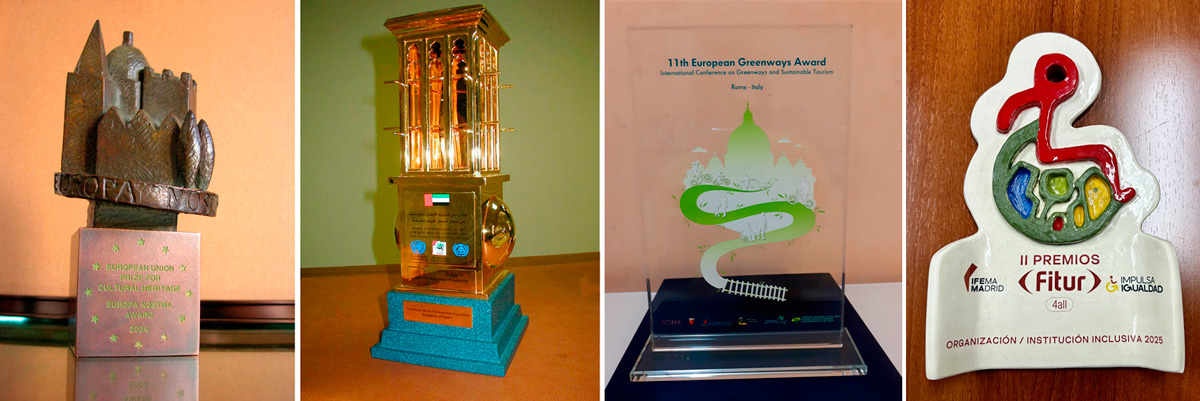Old railways
The railway, the most ecological means of transport, provides us with
new options for leisure and mobility thanks to railway routes that are now out of service.
In Spain in 1993 there were more than 7,600 kilometres of lines in disuse, or that never came into service because the construction work was never completed. The Greenways Programme arose as an initiative to reuse and enhance the value of disused railway heritage. A heritage of great historical and cultural value, which is being rescued from oblivion and total disappearance given the enormous potential it offers to develop new initiatives for mobility and active and sustainable leisure purposes, in accordance with the new social demands of recent decades.
In Spain in 1993 there were more than 7,600 kilometres of lines in disuse, or that never came into service because the construction work was never completed. The Greenways Programme arose as an initiative to reuse and enhance the value of disused railway heritage. A heritage of great historical and cultural value, which is being rescued from oblivion and total disappearance given the enormous potential it offers to develop new initiatives for mobility and active and sustainable leisure purposes, in accordance with the new social demands of recent decades.
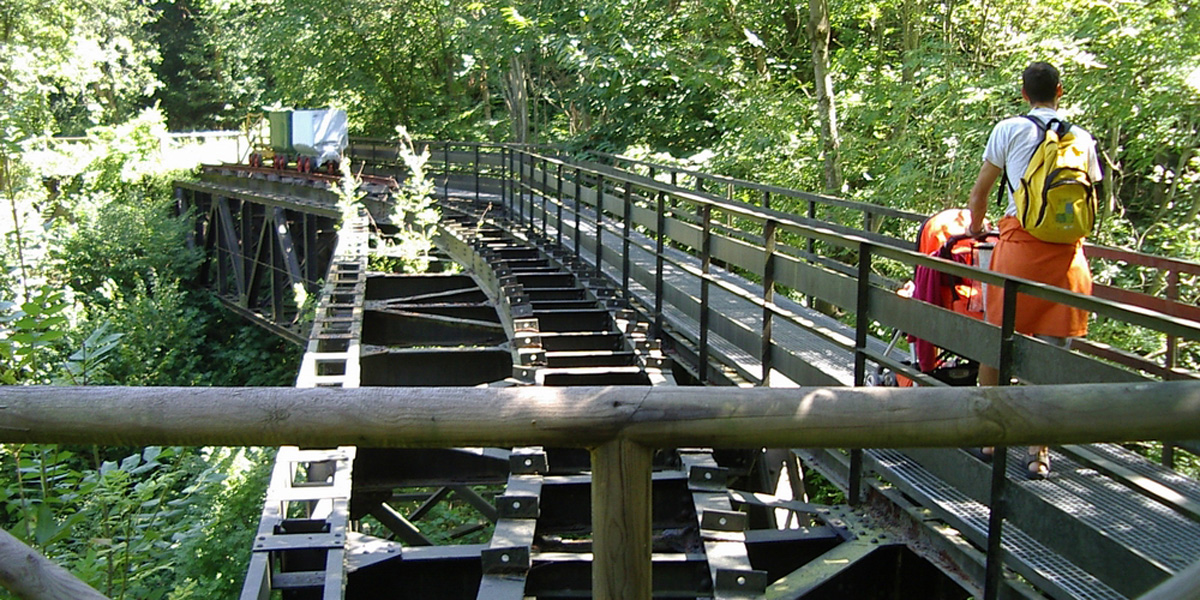
Greenways
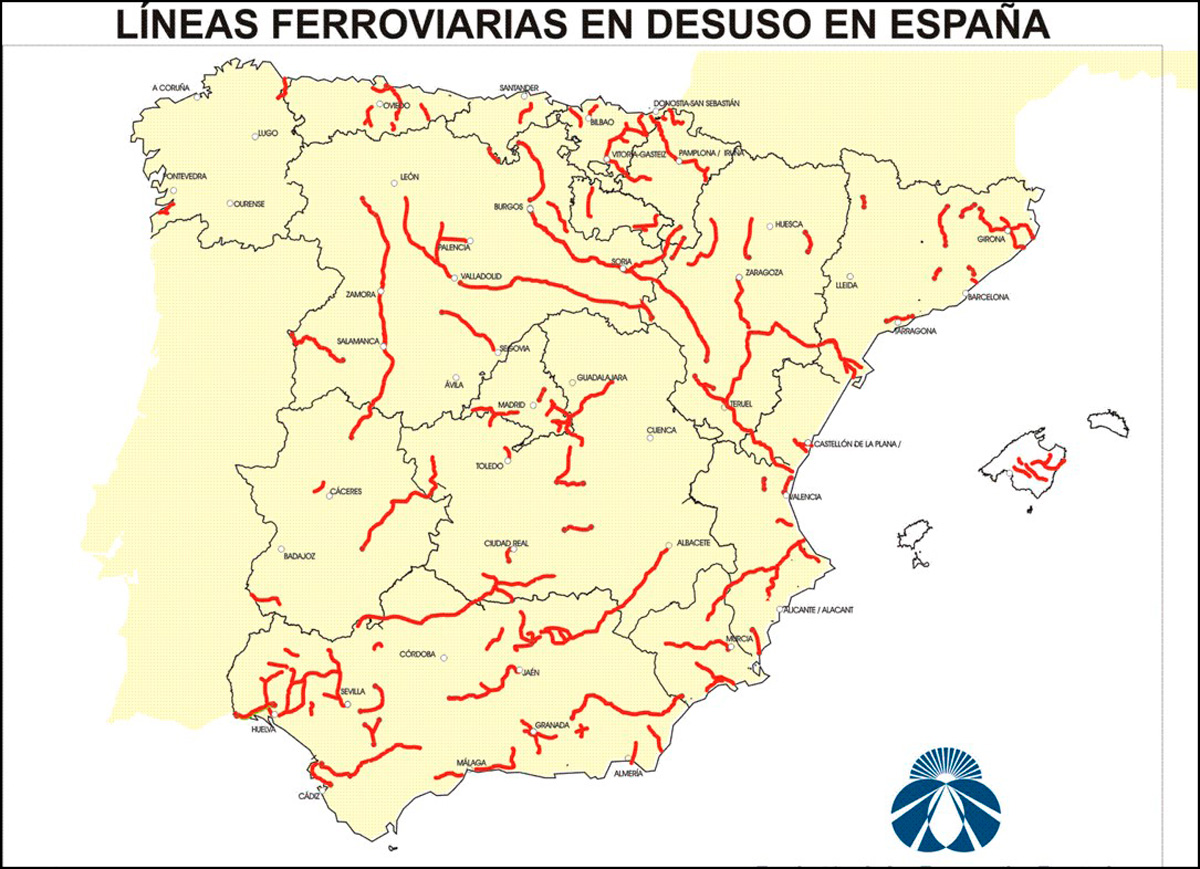
Since 1993, these old railway lines have been prepared as non-motorised routes, thanks to the contributions of a
large number of entities, for the use of the local population (on foot and by bicycle) as well as cyclists and trekkers.
In addition, thanks to their wide bends, low slopes, their width and the existence of tunnels, bridges and viaducts, these itineraries are for the most part accessible to all people, regardless of their physical condition or age, including people with disabilities.
The recovery of this heritage and its availability to the public is the objective of the Greenways Programme, developed since 1993 by the former Ministry of Public Works, Transport and the Environment, in which the Ministry of Agriculture, Fisheries and Food has currently taken on a predominant role, as the largest investor in the recovery of these old railway lines through the Nature Trails Programme, implemented in 2004.
In addition, thanks to their wide bends, low slopes, their width and the existence of tunnels, bridges and viaducts, these itineraries are for the most part accessible to all people, regardless of their physical condition or age, including people with disabilities.
The recovery of this heritage and its availability to the public is the objective of the Greenways Programme, developed since 1993 by the former Ministry of Public Works, Transport and the Environment, in which the Ministry of Agriculture, Fisheries and Food has currently taken on a predominant role, as the largest investor in the recovery of these old railway lines through the Nature Trails Programme, implemented in 2004.
Likewise, in the past Renfe and Feve played a fundamental role, a role that now corresponds to Adif, an entity that in collaboration with the promoters of these projects provides, through lease contracts, the land and buildings that form the basis of these greenways.
However, this entire Greenways Programme would be unfeasible without the active participation of the
promoters and managers of the greenways, i.e. the Autonomous Regions, Provincial Councils, and City
Councils, which promote the implementation of greenway projects and are responsible for the maintenance,
management and promotion of these routes, as well as cycling groups, ecologists, heritage defenders and
citizen groups, who also decisively promote the implementation of many of these greenway projects.
The Greenways Programme, which is promoted, boosted and disseminated at the national level by the Spanish Railways Foundation, provides the different greenway initiatives in Spain with several fundamental values. On the one hand, homogeneous identifying features that enabled them to be distinguished by their railway origin and defined as a new and quality resource, safe and accessible to all. On the other hand, technical advisory work and an important process of involvement and participation of institutions and citizen groups at the local level. In addition, it offers the possibility of integration into joint communication and promotion actions of these itineraries that are constantly being undertaken by the Foundation's Greenways Management.
The Greenways Programme, which is promoted, boosted and disseminated at the national level by the Spanish Railways Foundation, provides the different greenway initiatives in Spain with several fundamental values. On the one hand, homogeneous identifying features that enabled them to be distinguished by their railway origin and defined as a new and quality resource, safe and accessible to all. On the other hand, technical advisory work and an important process of involvement and participation of institutions and citizen groups at the local level. In addition, it offers the possibility of integration into joint communication and promotion actions of these itineraries that are constantly being undertaken by the Foundation's Greenways Management.
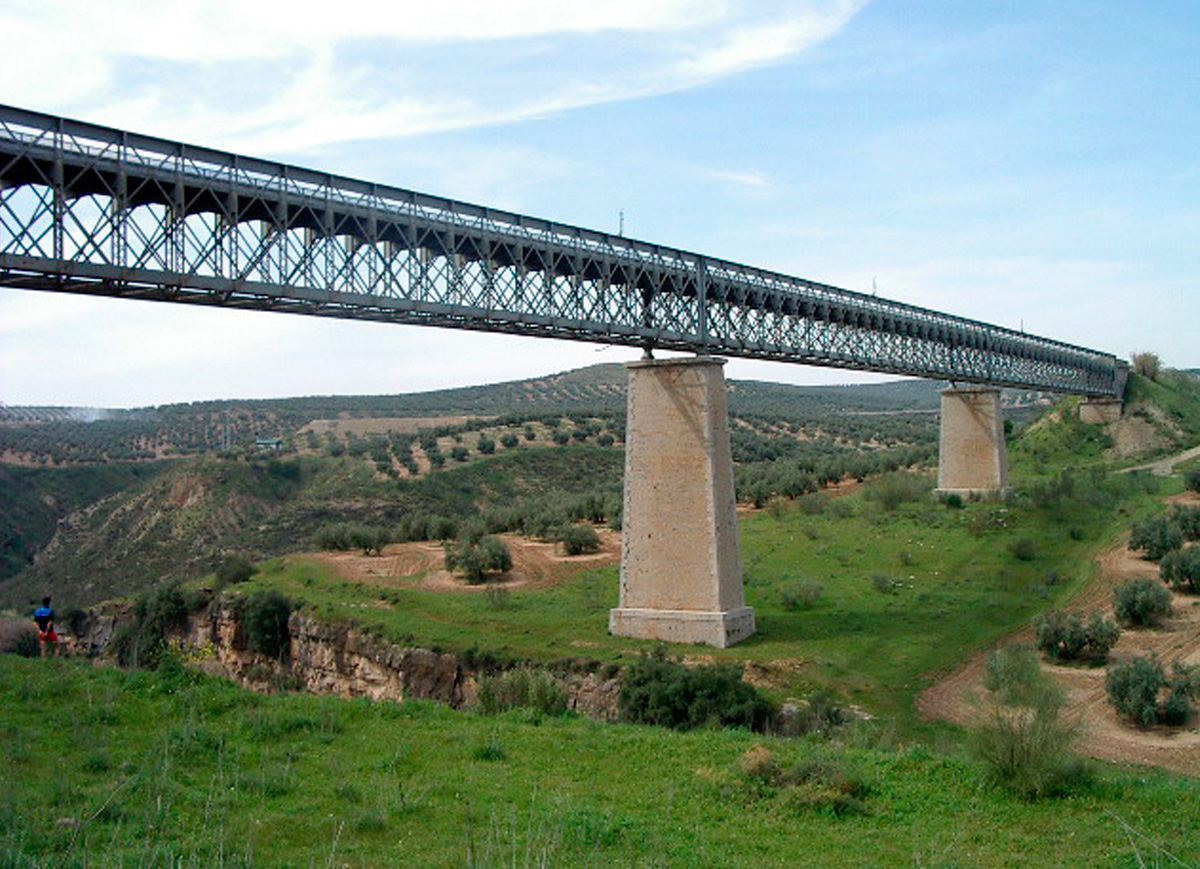
A good example in this regard is the Sierra Greenway (Cádiz-Seville) that currently provides 25 direct jobs in the management and maintenance of restored stations, involving around 300,000 uses/year. Another success story is the Girona Greenways network, whose annual impact is valued at around 3.5 million euros, with the creation of 62 direct jobs and nearly 1,000,000 uses/year.
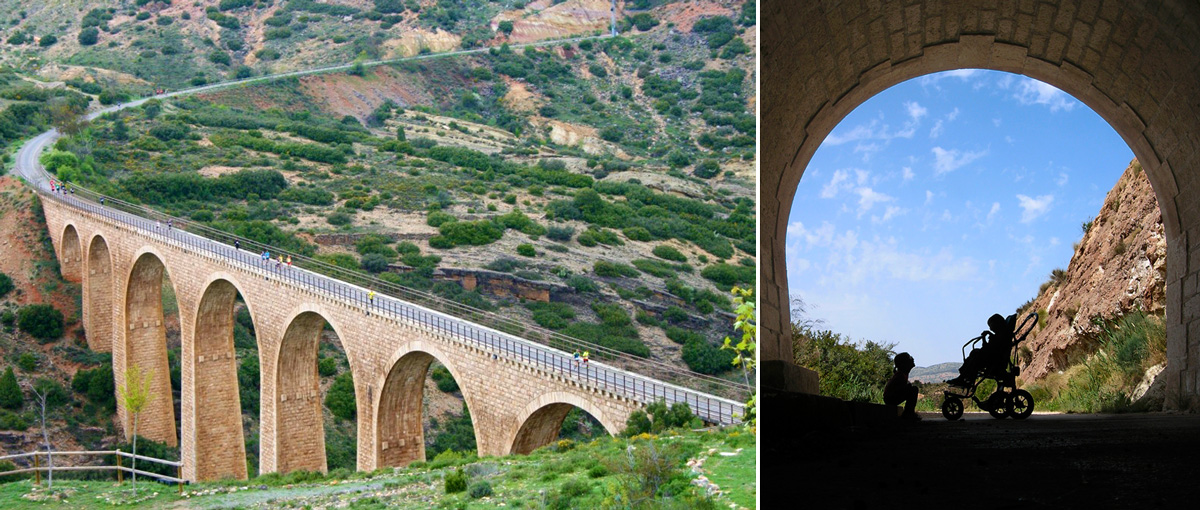
The stations
Thus, greenways not "only" involve the recovery of routes and all their elements (bridges, viaducts, tunnels, minor masonry works, embankments, and trenches) but also include the restoration of stations where ecotourism and cultural services for residents and visitors are located. In addition to the recovery of built railway heritage, they enable the creation of local employment and attract new public and private investments to different regions. There are many stations with new tourist and cultural uses: accommodation, cafes and restaurants, bicycle rental, tourist offices, and small museums, to which new travellers come; in the past they came with their suitcases and today they do so with their backpacks and saddlebags to remember the railways of yesteryear.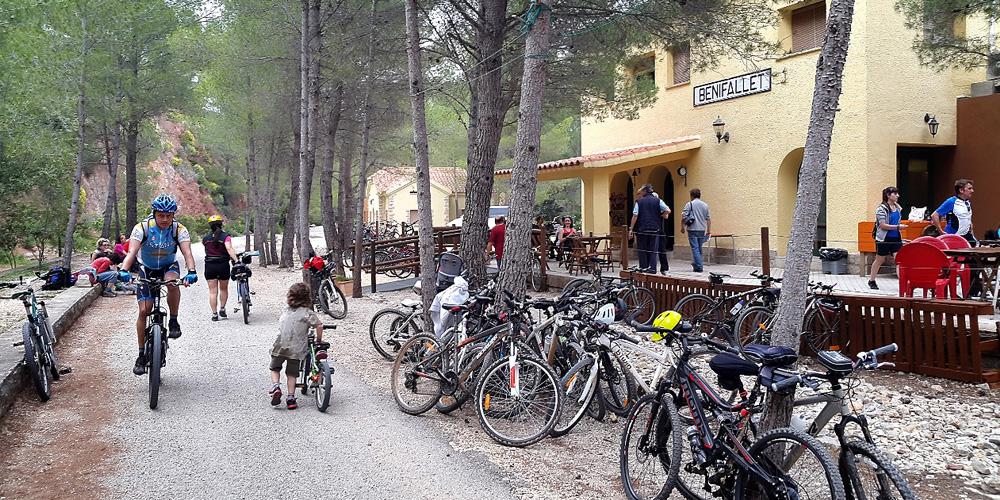
Greenways in figures
- 3.500 km of Greenways
- 140 itineraries
- 125 stations with new uses
- 275 million euros in investment solely in adapting the infrastructure.
International dimension
The development of the Greenways transcends Spanish borders.
In January 1998, the European Greenways Association (ESVMA) was created in Namur (Belgium), being chaired by the Spanish Railways Foundation until 2004. ESVA has more than 50 members, representing 15 countries.
In January 1998, the European Greenways Association (ESVMA) was created in Namur (Belgium), being chaired by the Spanish Railways Foundation until 2004. ESVA has more than 50 members, representing 15 countries.
If you want to be part of the European greenways family, don't think twice and join now! Together we go further.
In addition, the Spanish Railways Foundation collaborates with other countries in the Ibero-American environment for the establishment of Greenways Programs and exchange of good practices in other countries, such as Mexico, Colombia or Chile.
A well-known program
- International Award for Good Practices of the UN Habitat Programme, 2000.
- Sustainable Tourism Award from the World Travel Market, 2003.
- Europa Nostra Award for Heritage Conservation, 2004.
- ConBici Award for Sustainable Mobility, 2005.
- European Greenways Award 2005. Special Mention in the Activity and Promotion category for the Television Series on greenways called "Vive la Vía".
- 2006 Telenatura Award for the best Spanish production for the series on greenways called "Vive la Vía".
- 2006 Panda - WWF-Adena Award for the best institutional environmental communication initiative.
- "Network Award for the Promotion of Medium-sized Cities in South-West Europe" - CIUMED 2007.
- International Award for Good Practices of the UN Habitat Programme, 2008. Short listed for its candidacy "The transfer of the Good Practice Greenways Program to other regions of Spain and the World."
- 2008 Vía APIA Award, for information transparency by the Association of Environmental Information Journalists.
- Ulysses Award from the World Tourism Organization (UNWTO) 2009.
- Prize for Responsible Italian Tourism and Culture Tourism, 2011.
- Special Prize of the 9th European Greenways Award for the App "Greenways and Natura 2000 Network", 2019.
- 2020 FiturNext Observatory Award 2020, in recognition of Greenways as a short-listed initiative for its high replicability and positive impact on local economic development, 2020.
- Sustainable Tourism Award for the Cordoba Greenways. Awarded by Diario Córdoba and shared with the Provincial Council of Cordoba. 2022.
- Special Jury Prize of the 9th European Greenways Award for 30 Years of Greenways, 2023.
- Recognition of the Spanish Railways Foundation for its contribution to the promotion of the bicycle. Red de Ciudades y Territorios por la Bicicleta. 2024.
- Finalist in two categories of the 2nd Accessibility Awards for the promotion of accessible tourism and tourism for all. CRFM IMSERSO Salamanca 2024.
- Fitur4All 2025 Award. Impulsa Igualdad.
